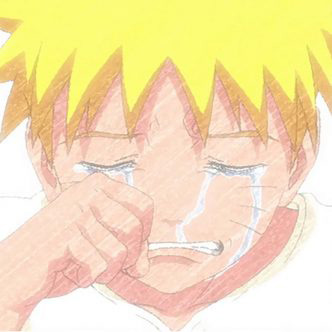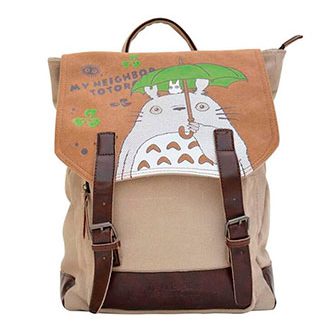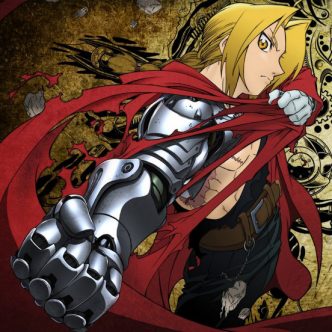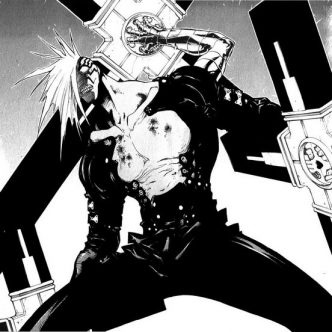Naruto Review: The Series We Grew Up On
To start with, I’d like to note that Naruto is one of the iconic pieces in the manga world. Back in its day, it formed a part of “the holy trinity of shonens”: Naruto – Bleach – One Piece. The author of the series, Masashi Kishimoto, managed to create an incredibly diverse universe with great history and well-developed conception dating back times.
- The plot of Naruto
- The pluses of Naruto
- 1. Style and atmosphere
- 2. Artwork
- 3. Action
- 4. Abilities and powers
- 5. Story
- 6. Intrigues
- 7. Flashbacks
- 8. Characters
- 9. Drama
- The minuses of Naruto
- 1. Main characters
- 2. Absurd twists
- 3. Story
- 4. Flashbacks
- 5. “I understand you!”
- Conclusion and scores
- Comments
Personally, I’ve never seen such massive discussions in forums concerning any other titles. There were hot arguments when fans were comparing the characters and not without a reason. Naruto stands out from the rest of the similar titles due to the detailed system of the characters’ fighting characteristics developed by the author. Of course, lots of manga series come out with appendices and extra descriptions but only Naruto databooks were crammed with information.
For example, look at the character file representing basic characteristics:
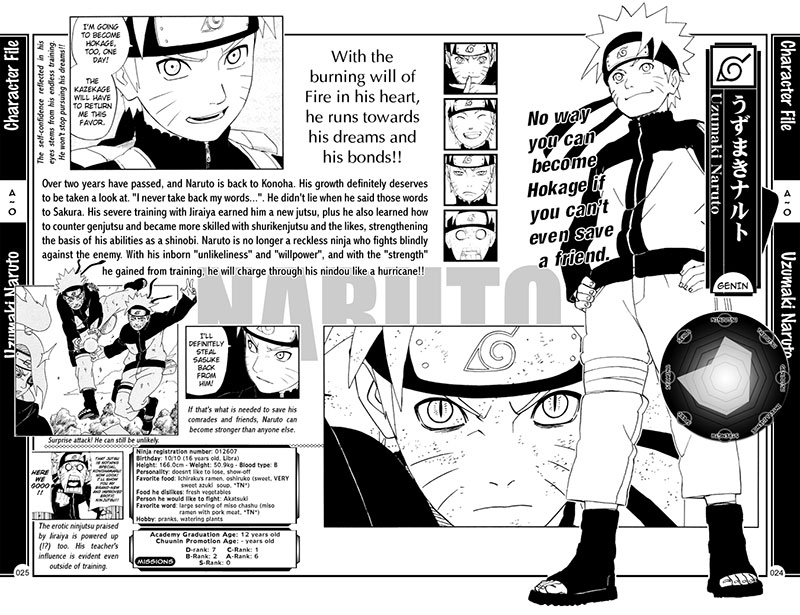
The illustration from Naruto databook
More than that, in the databooks, there are detailed descriptions of ALL the techniques used in the manga. I think that Naruto became so popular due to this well-developed system and such a great work in terms of balance deserves respect.
Naruto was serialized from 1999 to 2014, so for 15 years young readers became adults but only a small percentage of them had given up reading the manga by that moment. It means that the author managed to touch the right chords of the target audience.
Now, let’s see what is so special about this manga.

The plot of Naruto
Twelve years before the series start, the village of Konoha was attacked by the Nine-Tailed fox demon. The leader of the village sacrificed his life and sealed the Nine-Tails into his newborn son, Naruto Uzumaki. After that, the villagers are afraid of Naruto and avoid him as they see him as the Nine-Tails itself. Sixteen years later, Naruto graduates the ninja academy and becomes a shinobi. He wants to become the greatest Hokage of the village.
The pluses of Naruto

1. Style and atmosphere
As far as Naruto is about the interaction between many countries with shinobi as the main combatant force, it is expected to show us the world in its entirety and global reach. It’s certainly there. All the countries are unique, with a great number of well-developed characters. Moreover, the manga tells us the whole history of the world so that you can even chronicle all the events. There are no chronological mistakes, and the world-building is at high level. Hats off to the author!
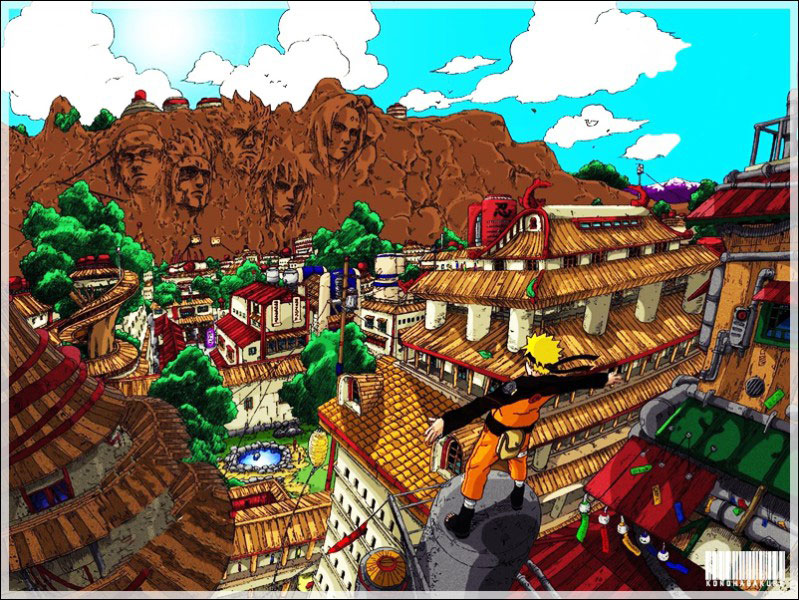
The world in Naruto
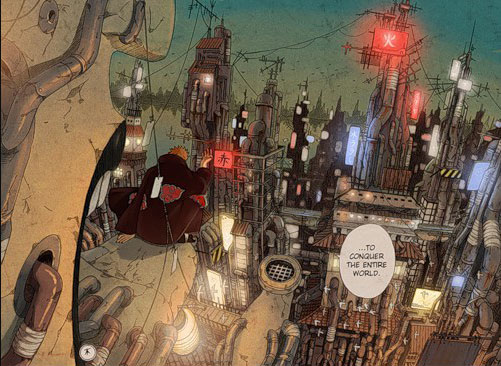
The world in Naruto
2. Artwork
The artwork is accurate and realistic with right proportions and without any abstract images. Although the backgrounds are not so diverse (mainly, we see picturesque woods), the mangaka depicts all the main scenes in the smallest details, especially the cities. In my view, the images of elemental forces and fighting techniques are fantastic:

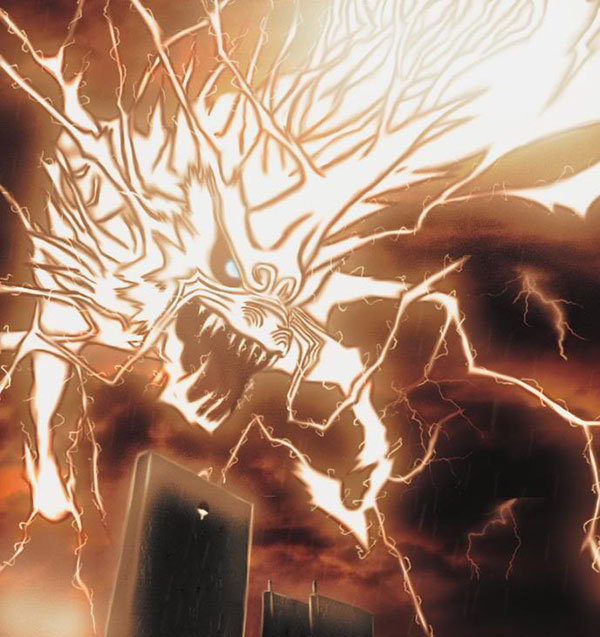
The depiction of fighting technique in Naruto
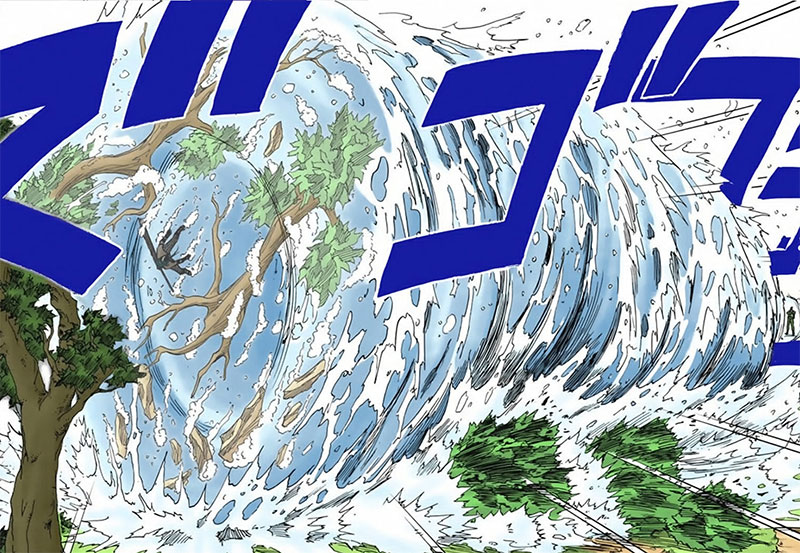
The depiction of elemental forces in Naruto

3. Action
I remember there was a lot of heated debate concerning the fights in Naruto. Since the representation of combat scenes was very detailed, the readers were making a close study of every illustration and saw an argument in every small piece.
In addition, the action scenes are really spectacular in terms of the massiveness of the fights as well as the power of the characters’ abilities, their uniqueness and specificity. Needless to say, the diversity of the techniques makes the fights even more epic. The series contrasts favorably with other titles of the same genre like Toriko, Nanatsu No Taizai, and Fairy Tail.
4. Abilities and powers
To tell the truth, I haven’t seen such a great variety of fighting technique in any other titles. Each and every personage has at least three abilities. As for the main characters, they are endowed with over 30 abilities. 30! Can you imagine that? Furthermore, the author details them all in the databooks, provides gradations, for example, the casualty radius. It’s beyond all praise!
Besides, there were techniques that are so unique that I was bowled over by the mangaka’s rich imagination.
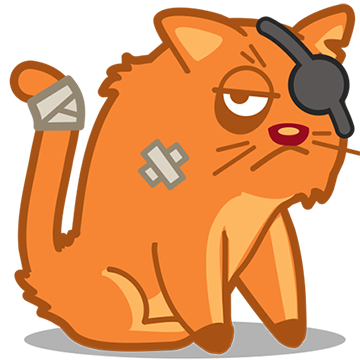
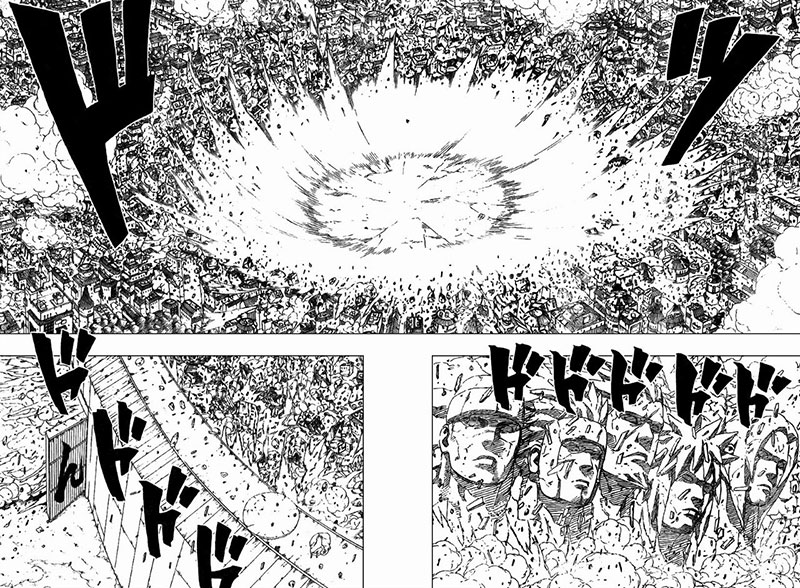
The characters’ abilities and unique techniques in Naruto
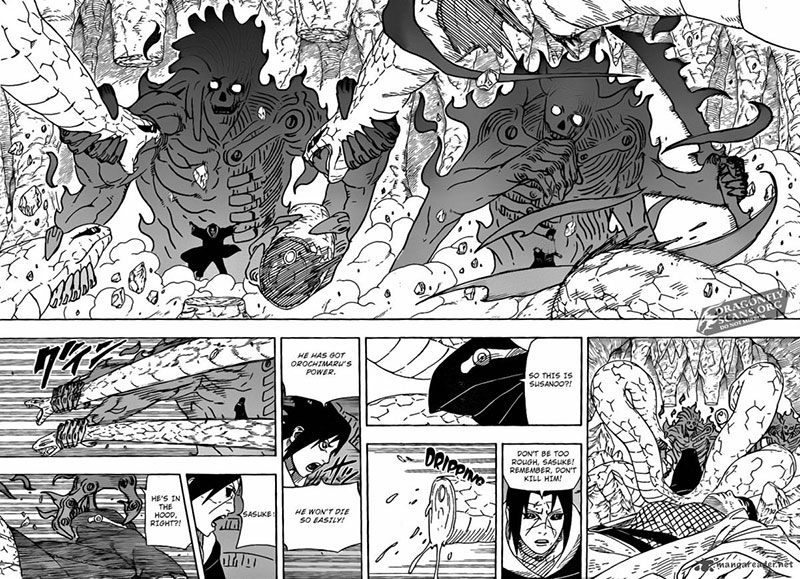
The characters’ abilities and unique techniques in Naruto

5. Story
As for the storyline, I can say that everything was quite good but only before some turning point, that’s why it refers to both pluses and minuses.
The plot is developing step by step. First goes the introduction, then a couple of ordinary “quests” where the main characters’ personalities are showed in extreme conditions. After that, there is a little of drama, then the first serious villain and a powerful arc with unhappy end but quite affecting and embracing lots of narrative strands, and finally, a “villainous secret organization” enters the arena.
Although the story is quite standard and the arcs are clichéd, it’s really gripping due to the introduction of new characters that are usually so colorful that the environment surrounding them is just a background. In addition to that, there are deaths in Naruto. Nobody is safe.
On the whole, you won’t get bored while reading the manga.
6. Intrigues
It’s hard to disagree that intrigues pep up practically all stories. In Naruto, there are masses of personages who pursue their own aims: to defend their relatives, to become immortal, to establish a new world order, and so on. All the characters constantly interact with each other carrying on intrigues that keep readers at the edge of their seats.


7. Flashbacks
Talking about flashbacks, I would distinguish two types of them and the first one refers to pluses. The point is that the secondary characters’ flashbacks provide a great deal of useful and important information. They reveal the history of the world and the interactions between the personages in the past and complement the plot perfectly. Each flashback lets readers see the story in a different light, form their opinion on the characters and even change their views towards the whole series.
8. Characters
Whoever you like! There is a great variety of characters. Fans even made cults of some of them and split up into implacable groups. You can find infinite gigabytes of fan art in the Internet!


9. Drama
When you’ve got attached to some favorite character, it’s very hard to let him (or her) go. In Naruto, the author manages to show the characters’ deaths in the way to touch the reader to the heart. Moreover, such moments usually involve the conflict of characters’ views which makes the things even tenser.
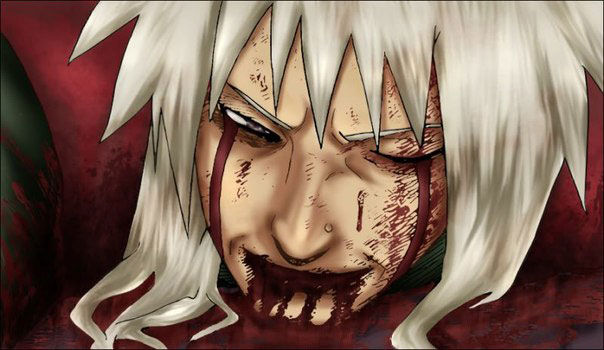
Death scenes in Naruto
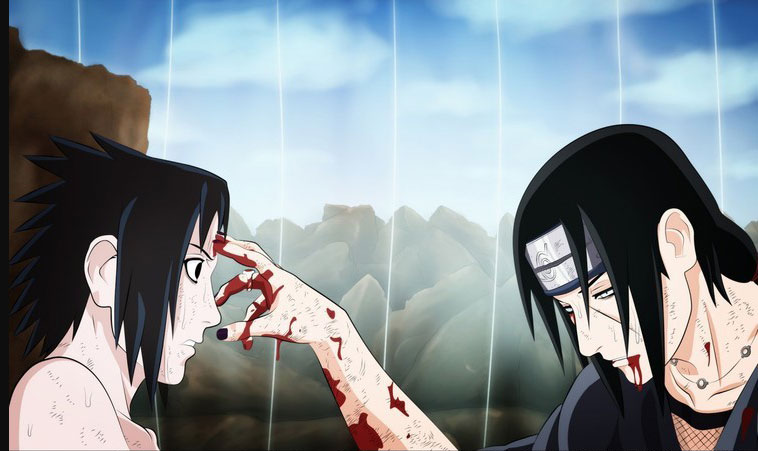
Death scenes in Naruto
The minuses of Naruto
1. Main characters
What about the main characters’ inner worlds, their philosophies, views of life? Nothing! I’ve read many different titles where characters are children but in Naruto they are beyond good and evil. Time is getting on; they meet lots of adults spoon-feeding them with the knowledge of the world structure. What’s the result? Nothing has changed. There is no development of the main characters’ personalities, no motivation, and no personal growth.


2. Absurd twists
Talking about those two main characters again, they beat tons of opponents who could actually nail them to the wall with ease. We see poor absurd twists one after another. Suddenly, the personages forget about their key abilities used quite recently, get into some kind of “the atmosphere of stupidity”, and begin to philosophize. Imagine an adult man with a strong life philosophy talking to a fifteen-year-old in dead earnest. What’s more, he changes his views after that. Are you serious? That’s harsh… Only Bleach and Fairy Tail may be worse than that.
3. Story
As I’ve already mentioned in “pluses”, the plot is fine but except the ending which is so terrible for such a great manga. The problem is in the final boss who is the odd one out, needless, and doesn’t fit into the whole conception. Besides, the author isn’t developing his personality and motivation to the full.
Actually, it’s not only about the boss. The manga started to fall apart long before the final part, and I think everybody noticed that. It’s hard to say what exactly the “turning point” was that’s why I’ll say in general – it was about the time when the author said that he was tired of Naruto and wanted to create a manga about bandits. Of course, if the mangaka got bored with his piece, the quality became low.


4. Flashbacks
Now I’ll tell some words about the second type of flashbacks, to be more precise, about the main characters’ flashbacks. What is interesting is that they have one flashback each and one and the same flashback together. We see those flashbacks (depicted in a sloppy way) practically in every arc. What for? Does the author think that his readers have bad memory or something? Seriously, we remember that Sasuke’s clan was slaughtered, that nobody played with Naruto when he was a child and, of course, that they are friends. That’s enough!
What if the author implies something like that the characters are not just friends? Ahem, maybe that’s the reason they are holding hands so affectionately in the end…
5. “I understand you!”
This phrase is worth to be a minus. The main character shouts it in everybody’s face whatever it’s the right time or not. That really irritates!

Conclusion and scores
Overall, the most part of the minuses is not so serious and the ending is terrible against the background of the whole story which is great for sure. Generally speaking, we got an iconic piece that has been read by at least two generations of manga lovers.
| Сriteria | Scores | |
|---|---|---|

|
Story | 8/10. Lots of twists and turns on the whole but the ending is ruined. |

|
Artwork | 10/10. Perfectly clear and detailed which is very important for a shonen. |

|
Atmosphere | 7/10. The world of magicians instead of ninjas. |

|
Characters | 10/10. Tons of personages and they are all different and interesting. It would be perfect without the main characters. |

|
Drama | 7/10. Jiraiya’s death and Itachi’s story. That says it all. |

|
Logic and balance | 10/10. It’s 10 out of 10 despite the ending. |

|
Action | 9/10. Always thrilling if we turn a blind eye to some dragged-out moments. |

|
Originality | 6/10. Nothing original on the whole. |

|
Narrative organization | 9/10. There is some dragging-out but it’s rare. |

|
Humor | 1/10. Very poor. |

|
Final score | 8/10. It’s made for binge-reading! I recommend it. |
What do you think of positive and negative sides of Naruto? Share your opinions in the comments section. I’d love to hear from you!

